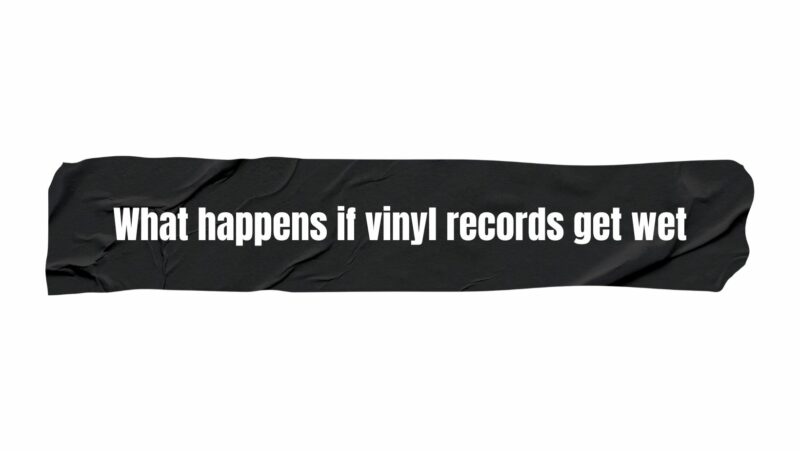Vinyl records hold a special place in the hearts of music enthusiasts, embodying a unique charm that transcends generations. The act of placing a vinyl record on a turntable, gently lowering the stylus, and immersing oneself in the warm, analog sound is an experience that captures the essence of musical nostalgia. However, the vulnerability of vinyl records to external elements raises a critical question: What happens if vinyl records get wet? This article delves into the intricate relationship between water and vinyl records, uncovering the potential consequences, steps to mitigate damage, and the importance of record preservation.
Understanding Vinyl Records: Before exploring the implications of water exposure, it’s essential to understand the anatomy of vinyl records. These discs are composed of polyvinyl chloride (PVC), a pliable material that can be affected by temperature fluctuations, humidity, and liquid contact. The grooves engraved onto the record’s surface are repositories of the audio information, making them crucial to sound quality.
Unraveling the Effects of Water Exposure: Water, a life-giving force, holds both benefits and perils for vinyl records. When vinyl records come into direct contact with water, a series of potential consequences arise, each with its unique implications for the record’s playability and condition. It’s imperative to explore these effects to better understand the risks involved.
Warping: A Visible Distortion: One of the most noticeable outcomes of water exposure is warping. Vinyl records are sensitive to changes in temperature and humidity, and when water enters the grooves and is absorbed unevenly, the record can take on a distorted, non-flat shape. Warped records do not play smoothly on turntables, causing the stylus to skip or jump across grooves and significantly compromising sound quality.
Mold Growth: A Hidden Threat: Water introduces the potential for mold growth, a hidden danger that can silently wreak havoc on vinyl records. Mold thrives in damp and humid environments, and if water infiltrates the grooves, it creates an environment conducive to mold formation. Mold growth can lead to discoloration, odor, and even structural damage to the record.
Deterioration of the Vinyl Material: The interaction between water and the PVC material of vinyl records can lead to degradation. Water can accelerate the breakdown of PVC, causing it to become brittle and prone to cracking over time. This deterioration weakens the integrity of the grooves, leading to irreversible damage and rendering the record unplayable.
Surface Noise and Sound Quality: Water exposure not only affects the physical condition of the record but also has a direct impact on sound quality. When water disrupts the smooth groove structure, it introduces surface noise, audible clicks, and skips during playback. These distortions detract from the immersive audio experience that vinyl records are known for.
Mitigating Water Damage: Preventing water damage is essential for preserving the integrity of vinyl records. Proper storage in a dry, controlled environment is the first line of defense. In the unfortunate event that a vinyl record gets wet, there are immediate steps that can be taken to mitigate damage:
- Prompt Action: Act quickly to remove the record from any standing water or wet surface to prevent further water absorption.
- Blotting: Gently blot the wet surface of the record using an absorbent, lint-free cloth to remove excess moisture. Avoid applying excessive pressure, which can exacerbate damage.
- Air-Drying: Allow the record to air-dry in a horizontal position, ensuring that it is elevated from any surface to prevent additional contact with water.
- Avoid Heat: While it might be tempting to expedite drying using heat sources, such as hair dryers or heaters, these can cause warping and further damage. Instead, opt for natural air-drying.
- Professional Assessment: If the record is valuable or exhibits signs of severe damage, consider seeking professional assessment and restoration services to salvage its playability and value.
Conclusion: The question of what happens when vinyl records get wet delves into the delicate balance between preserving a tangible piece of musical history and the unpredictable nature of water’s impact. The potential consequences of warping, mold growth, and deterioration highlight the importance of careful handling and storage of vinyl records. By understanding the risks and taking prompt, informed action when water exposure occurs, collectors and enthusiasts can ensure that the melodies locked within the grooves of vinyl records continue to resonate for generations to come.


